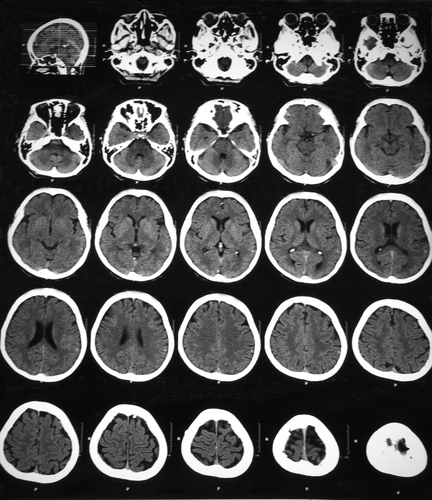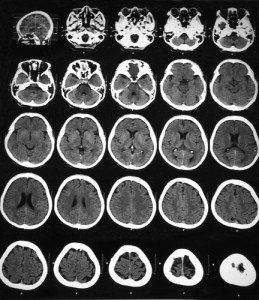Researchers Explore Role of NAD In Cognitive Decline of Multiple Sclerosis Patients

 A group of researchers led by Shin-ichiro Imai, MD, PhD, and Liana Roberts Stein, PhD, from Washington University School of Medicine in St. Louis have been working on pathways to trace cognitive decline in patients with multiple sclerosis (MS).
A group of researchers led by Shin-ichiro Imai, MD, PhD, and Liana Roberts Stein, PhD, from Washington University School of Medicine in St. Louis have been working on pathways to trace cognitive decline in patients with multiple sclerosis (MS).
It has been noted in previous research that brain cells derive energy for maintaining cognitive balance and normal brain function from compounds such as Nicotinamide Adenine Dinucleotide (NAD). With this in mind, researchers have made efforts to study the pathways related to production of NAD and test whether genetic modification of any particular NAD pathway production would lead to a drastic change in brain function. Their study was carried out on laboratory mice.
The results of this research were recently published in two journals, the May 8 issue of The EMBO Journal, a publication of the European Molecular Biology Organization, and in a recent issue of The Journal of Neuroscience.
Shin-ichiro Imai, MD, PhD, professor of developmental biology and of medicine and senior author of the study, explained that, “We are interested in understanding how cells make NAD and what implications that has for cellular function, especially in the context of aging and longevity. We know, for example, NAD levels decrease with age in tissues such as muscle and fat. We wanted to find out if the same is true in the brain.”
The investigators looked at the effect of NAD on two kinds of brain cells, the adult neural stem cells responsible for maintaining supplies of neurons, which require high levels of energy and are selective in where they derive energy from in the brain, and their supporting cells and forebrain neurons, which are vital for performing complex cognitive functions. Insights from this investigation could pave the way for therapeutic intervention for neurodegenerative disorders like Multiple Sclerosis (MS) and Alzheimer’s Disease (AD).
“Neural stem cells are very metabolically expensive, so you might expect them to be particularly vulnerable to loss of an energy source,” said first author Liana Roberts Stein, PhD, a postdoctoral researcher in Imai’s lab, on explaining the researchers’ decision to investigate the impact of NAD in cognitive decline. “There are other energy sources for brain cells, such as glucose, but no one had ever looked at where NAD is coming from in these cells.”
The pathway studied in this case involved the vitamin B compound Nicotinamide, which was taken up by cells in combination with Nampt, a dietary protein, and processed first into NMN and eventually to NAD. The compound is important for insulating the axons (production of myelin sheaths), which are in turn responsible for conduction of nerve impulses and maintenance of brain functions. In fact, scientists have stated that with increasing age, cognitive decline occurs not as a result of decreased numbers of nerve cells (grey matter) but as a result of a decline in the numbers of insulated axons (white matter).
On genetically modifying the NAD production pathway, and eliminating the source of Nampt, researchers found that neural stem cells stopped dividing and renewing themselves. This prevented them from creating insulation for axons, hence leading to a slowing down of brain functions and premature aging. However, after supplementing the Nampt-deficient mice with NMN added into their drinking water for 12 months, it was found that there was a restoration of the neural stem cell numbers as well as that of supporting cells.
[adrotate group=”4″]
This finding was looked upon as an important one by researchers. “We think that NMN could convey a similar effect in people,” Imai said. “A future clinical trial for NMN will tell us if it has any efficacy in humans,” the researchers said.
Another observation made by scientists in this regard was assessing the importance of NAD in cognition, especially by the neurons of the forebrain. The researchers demonstrated this by starving only the forebrain neurons from Nampt, keeping all kinds of cells and their energy supplies constant in the other parts of the brain. It was found that the mice became hyperactive, displaying no fear of life-threatening events and consequence — a sign indicative of cognitive decline. It has been noted that the forebrain is most vulnerable, affected during AD and MS. As a result, researchers concluded that Nampt (and NAD) dependence is critical for the development of these conditions.
The researchers concluded that, “It’s possible that these neurons’ dependence on Nampt is responsible for their extreme susceptibility to these conditions.It would be interesting to model some of these diseases in mice and see if supplementing NMN provides any benefit to their behavior or memory.”
“We haven’t done that study yet,” Imai added. “But this is the direction the entire field is going.”






